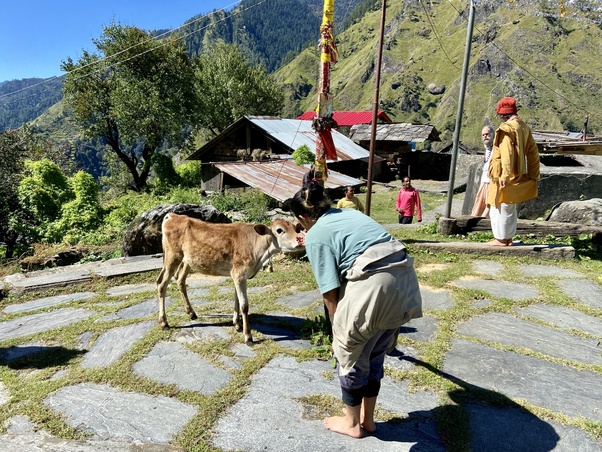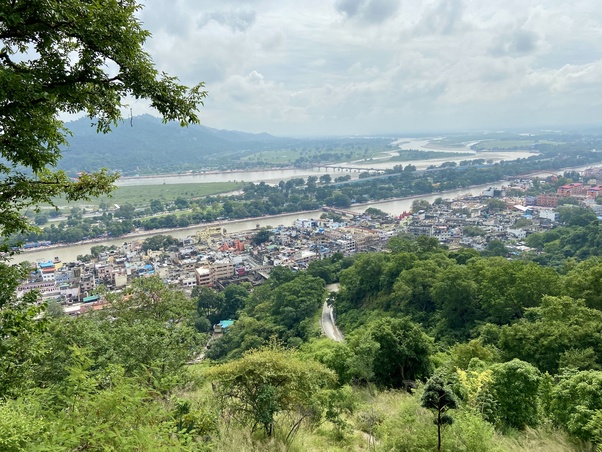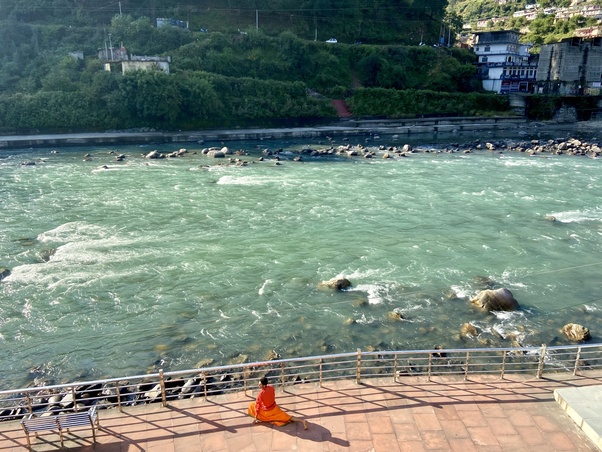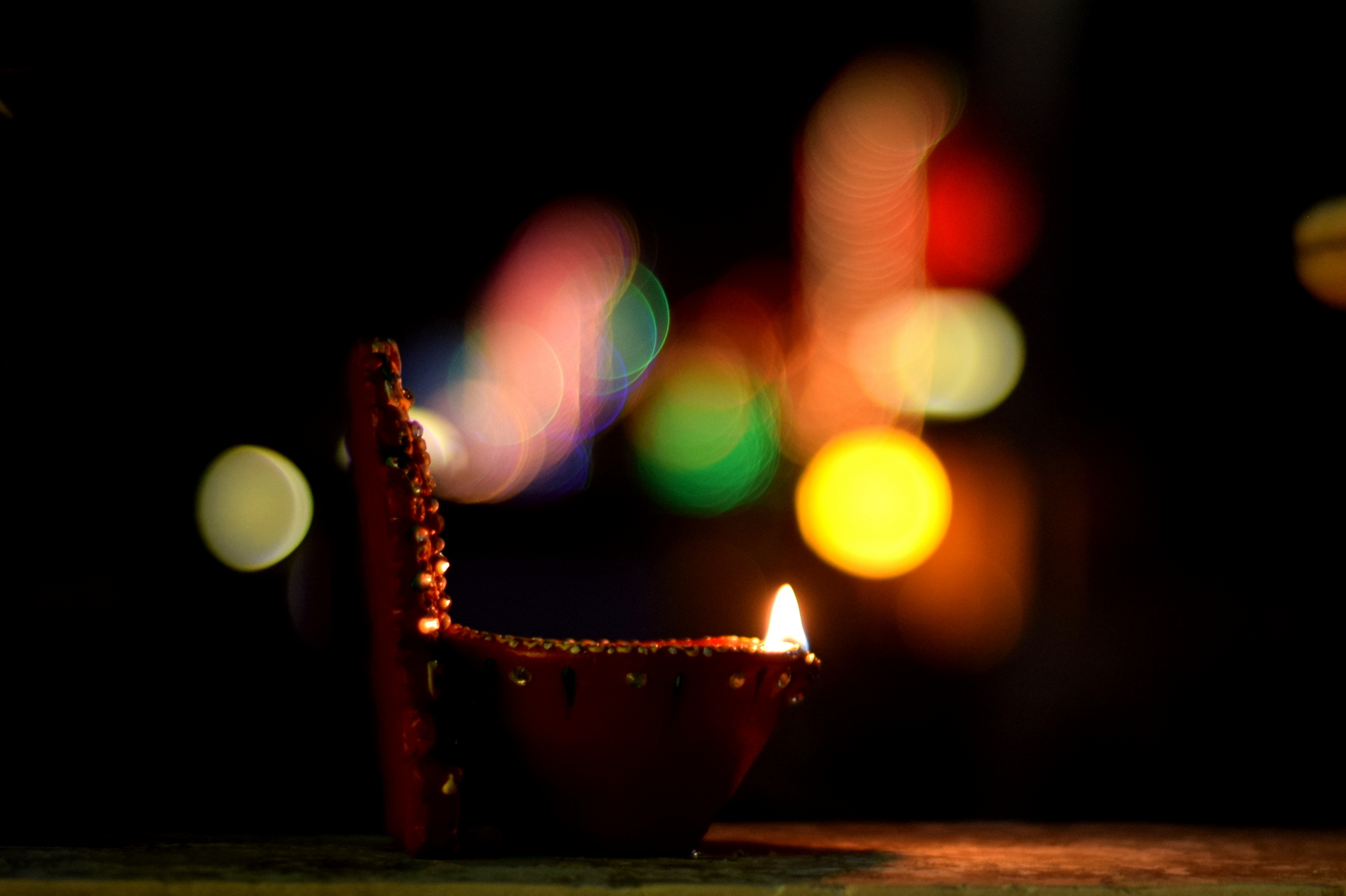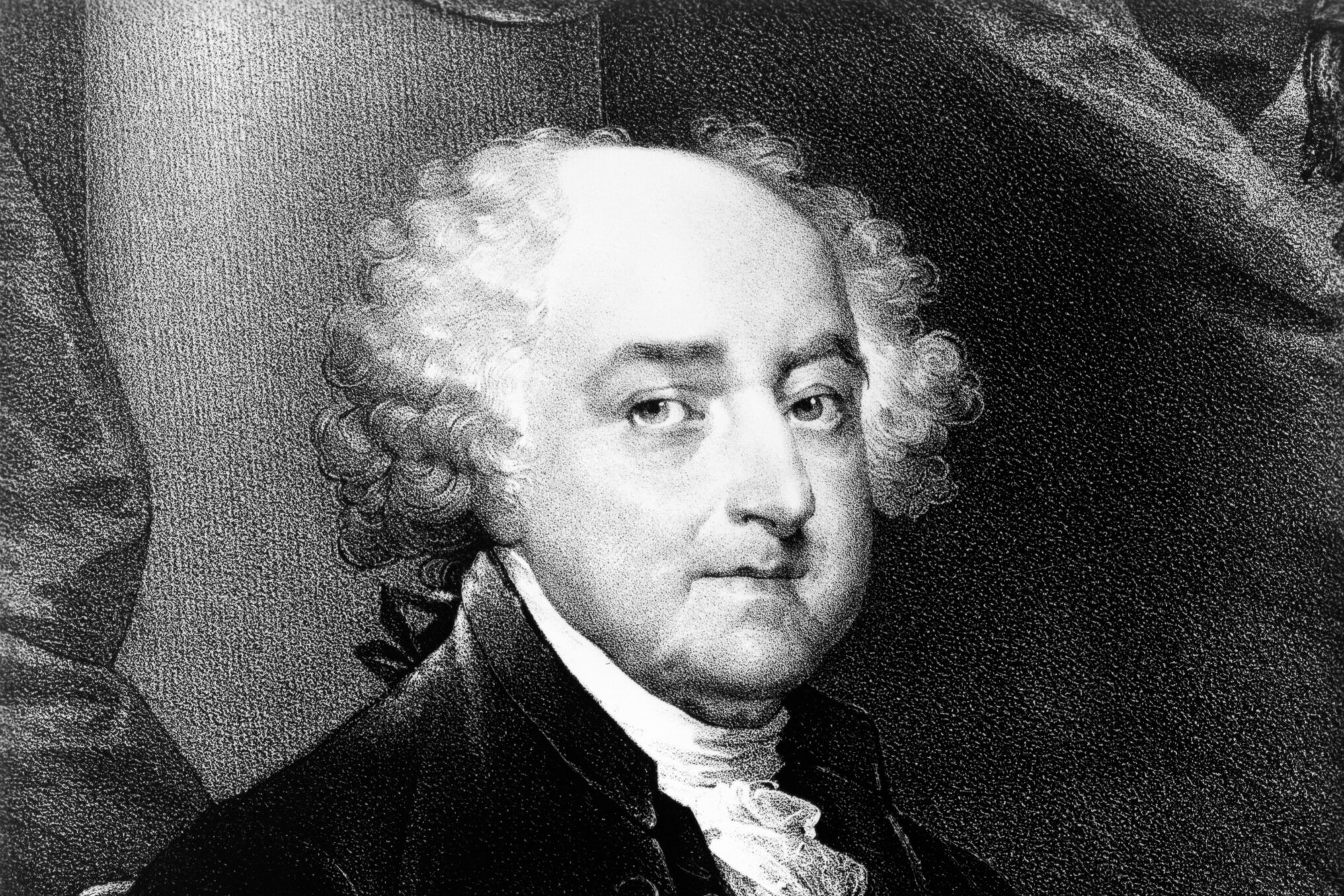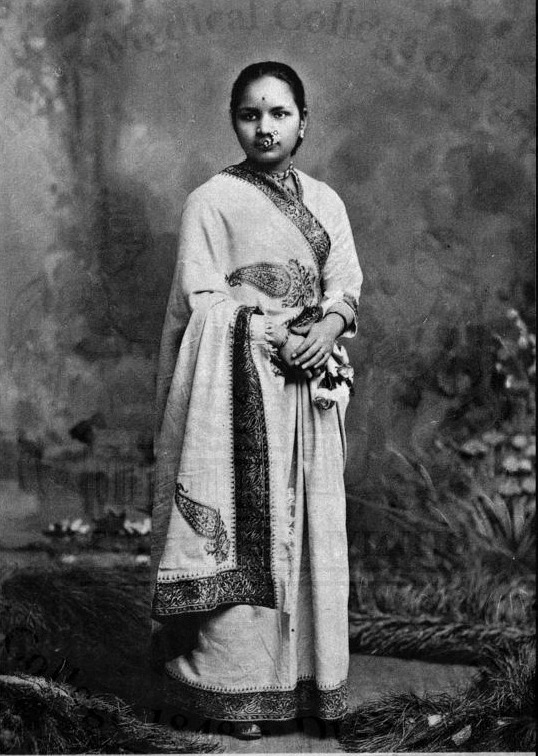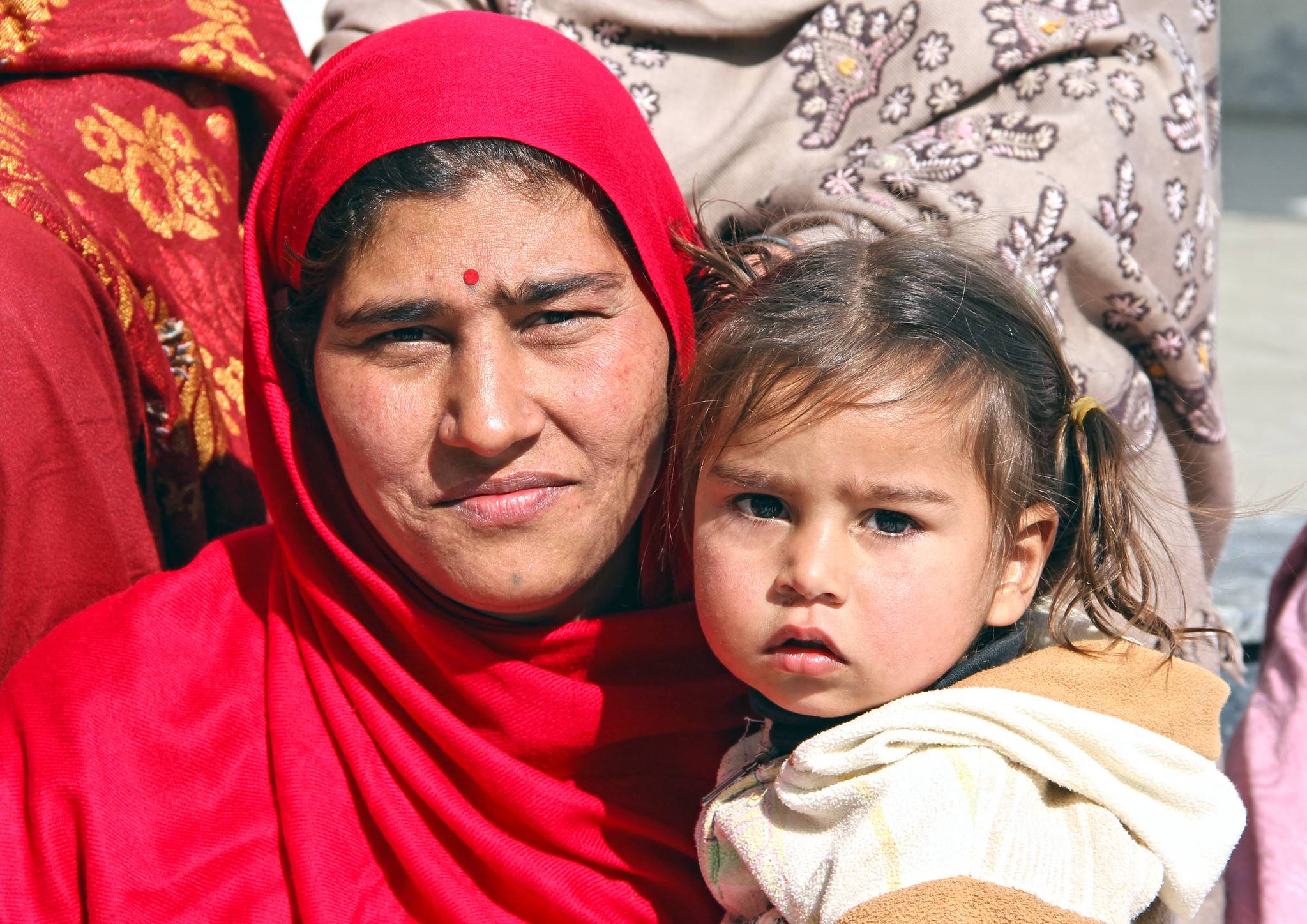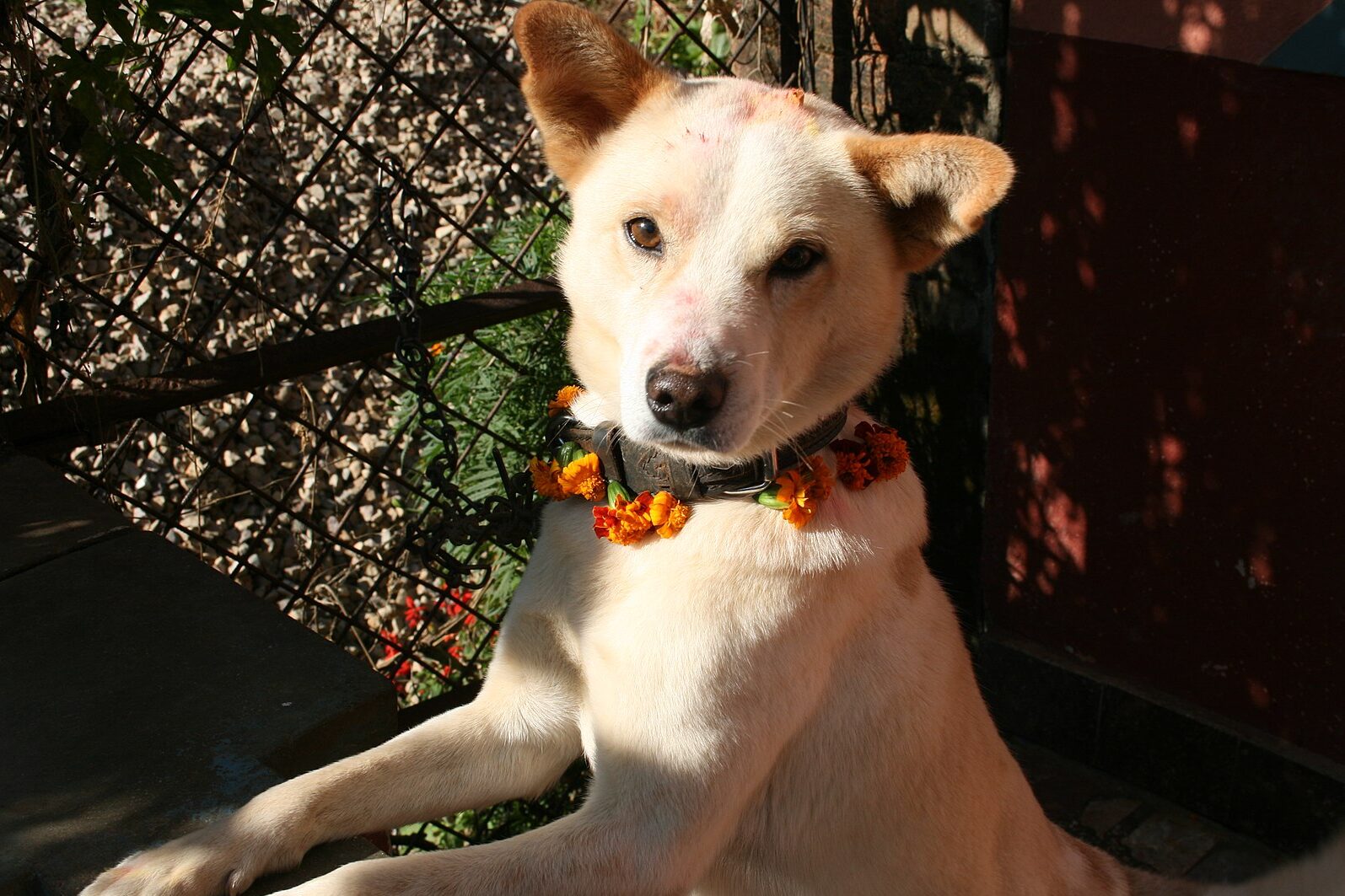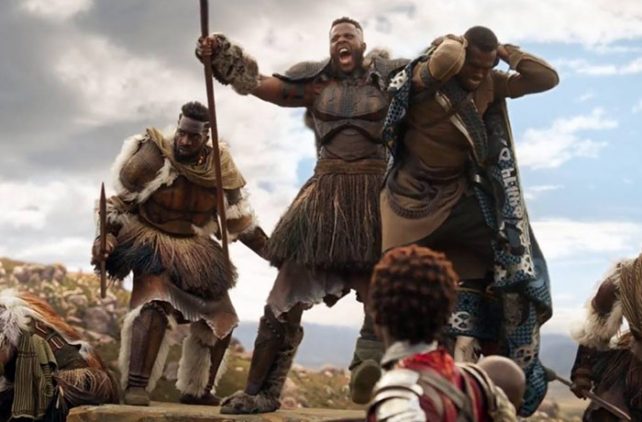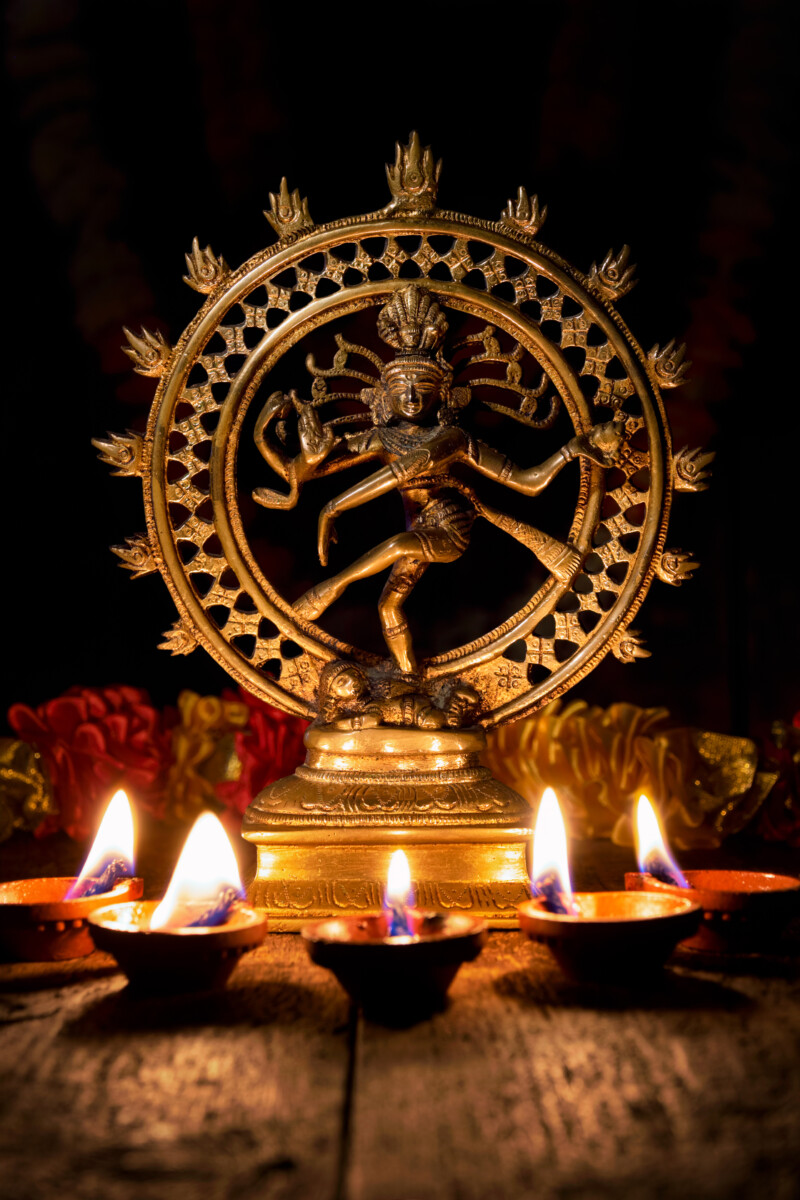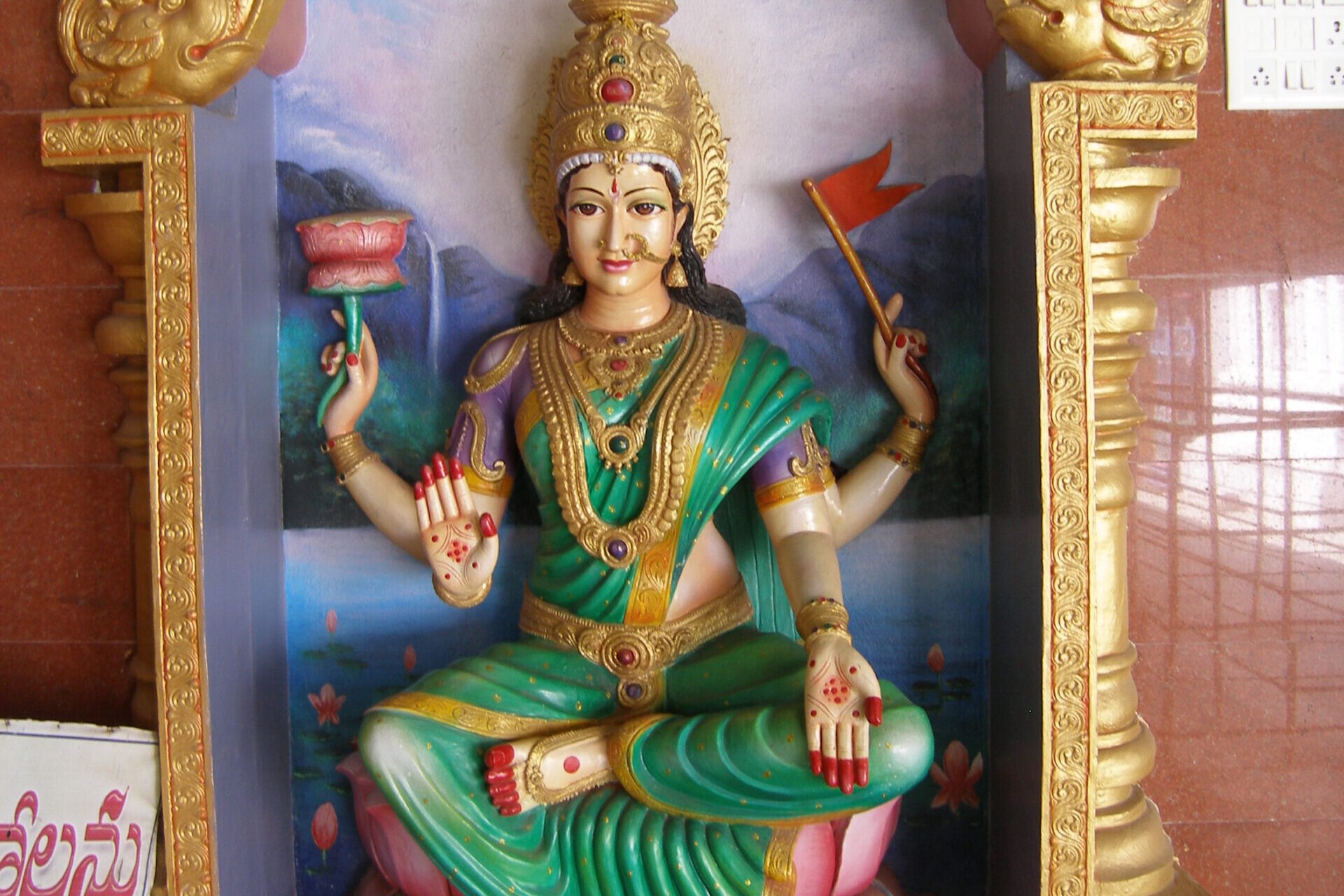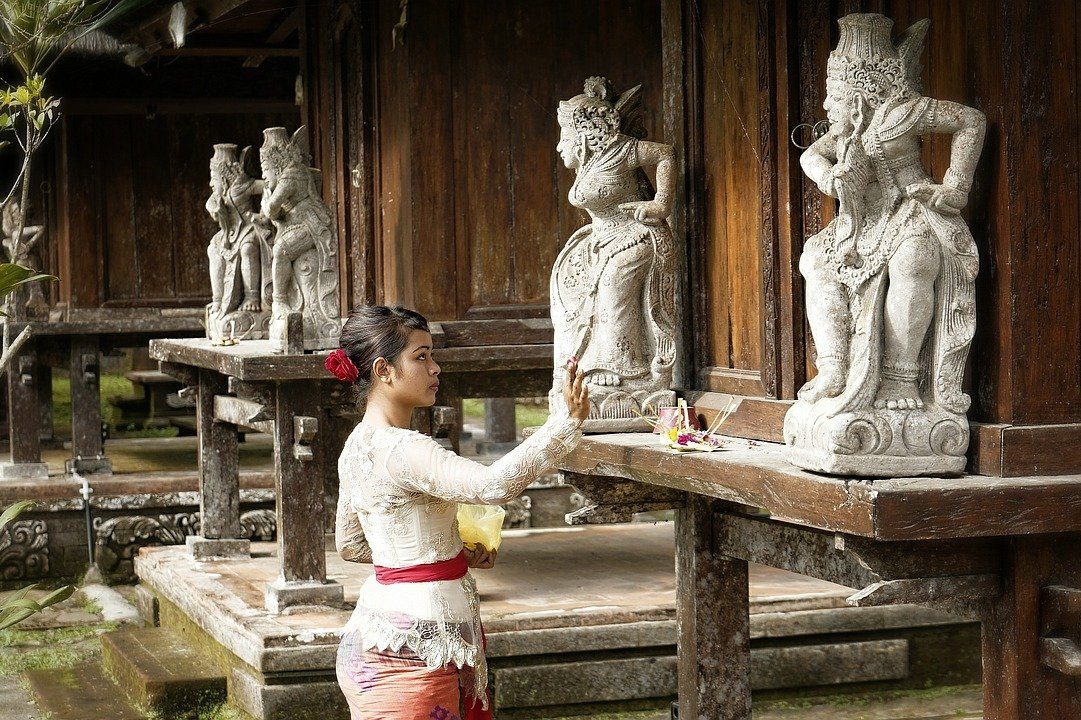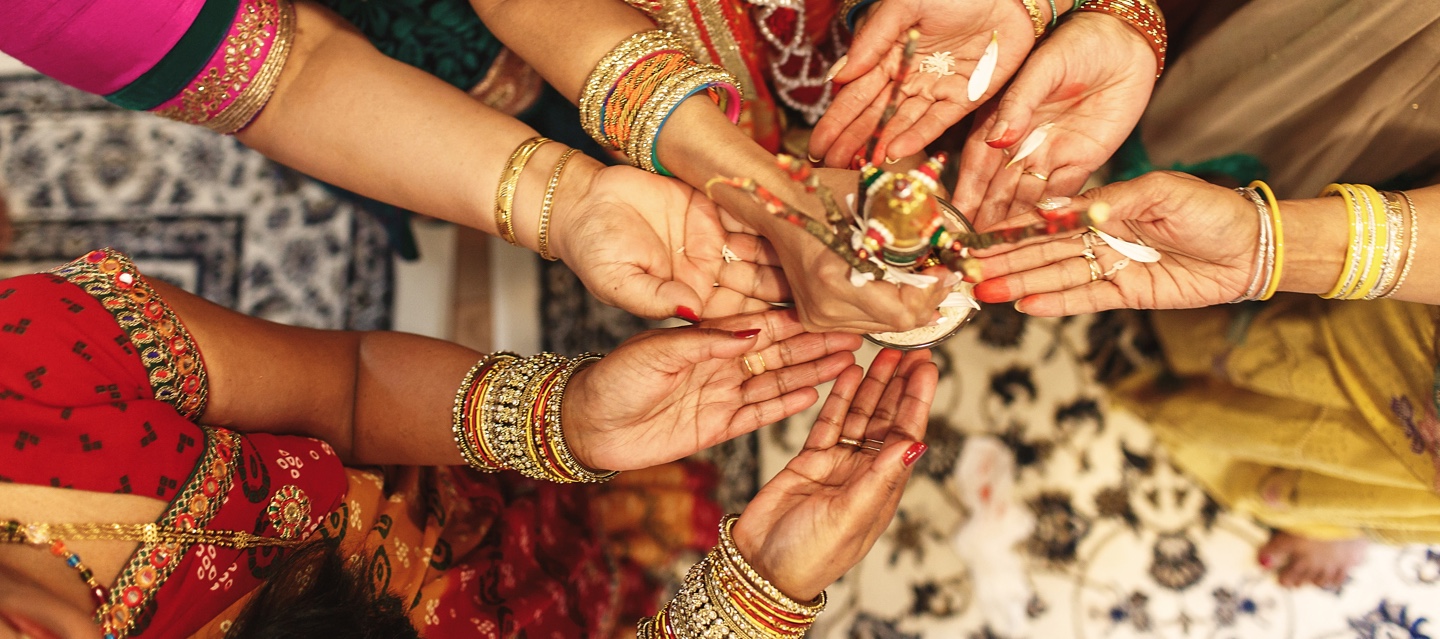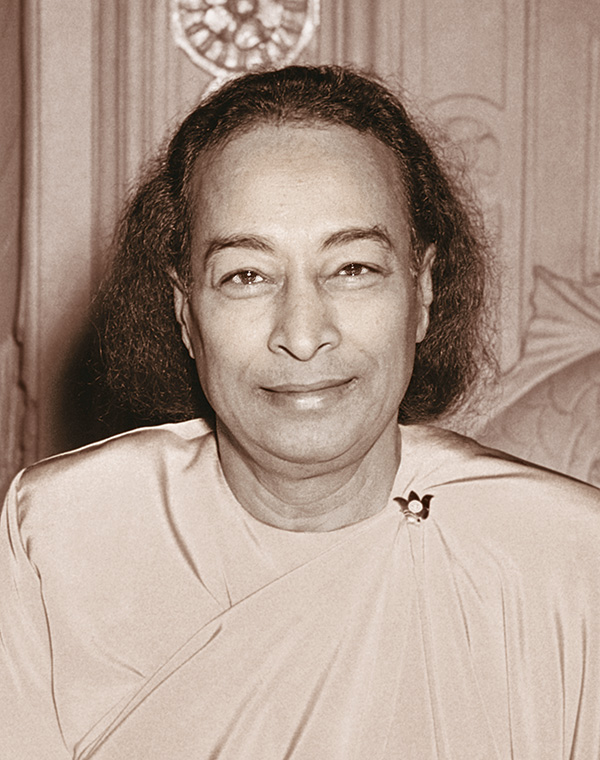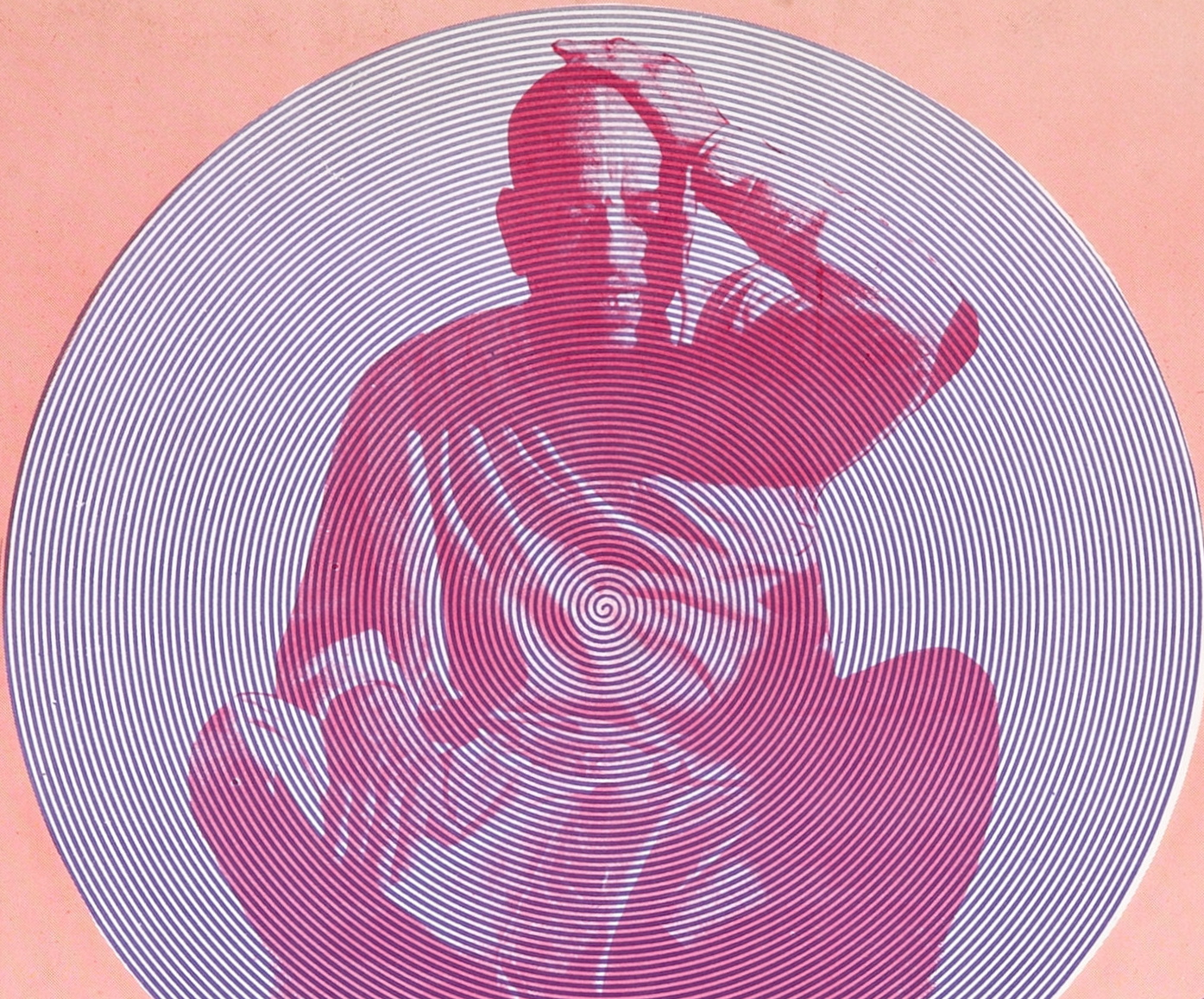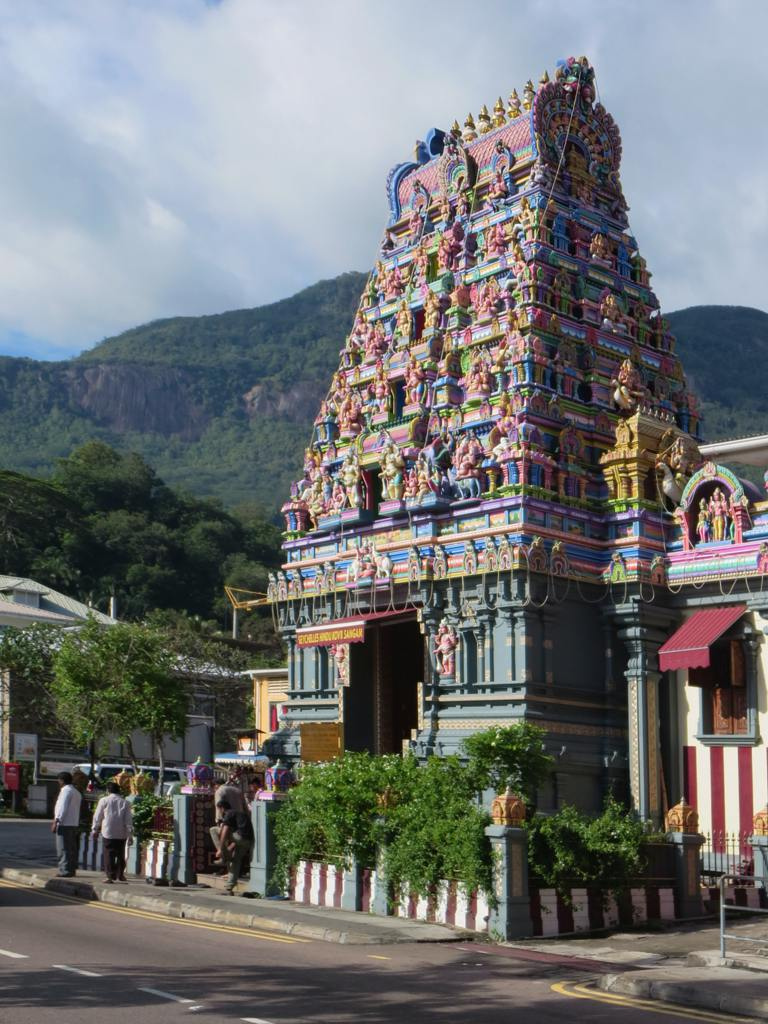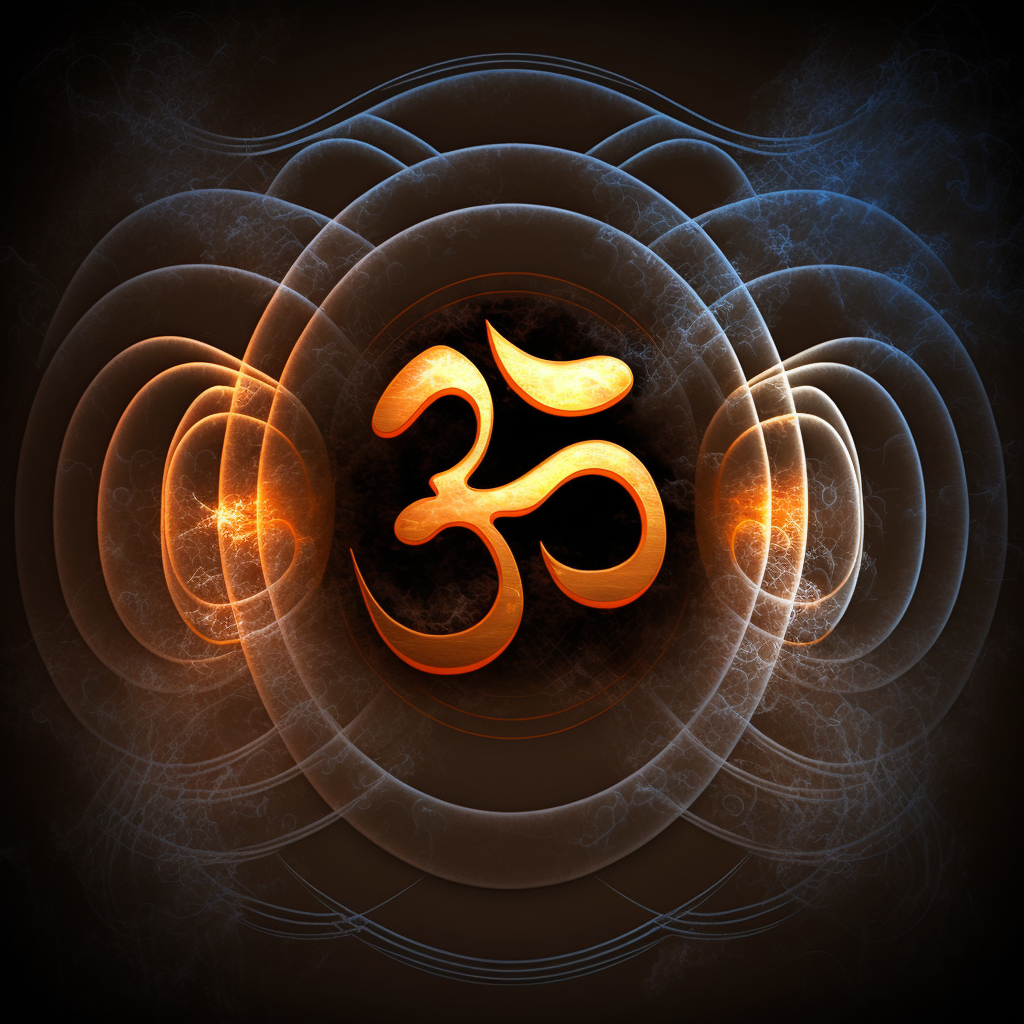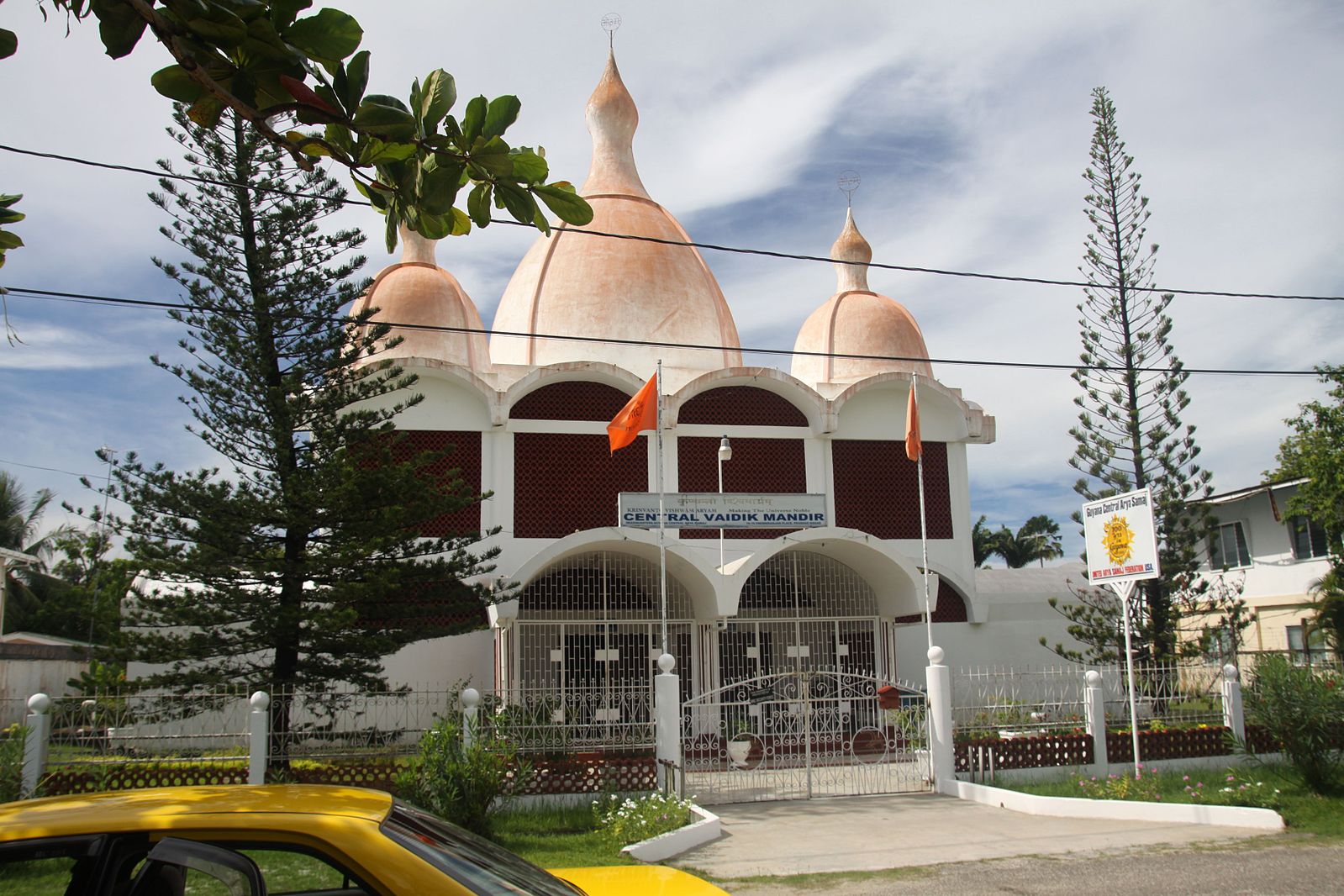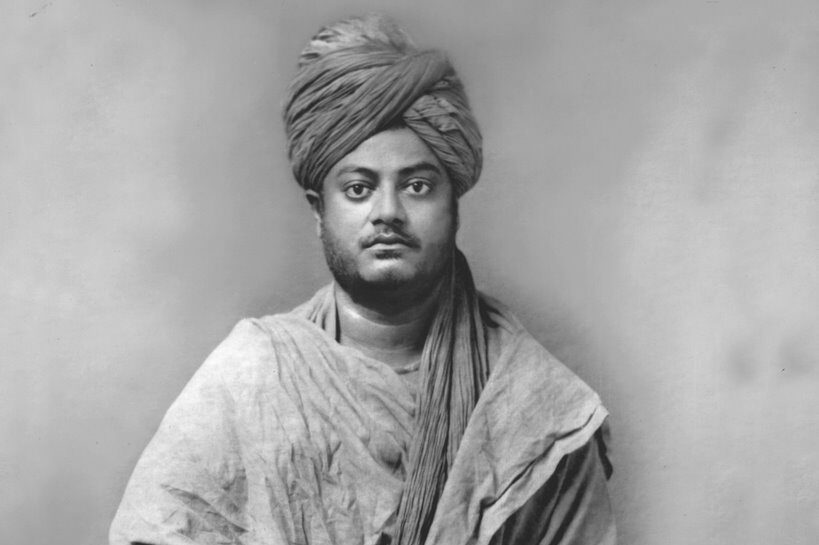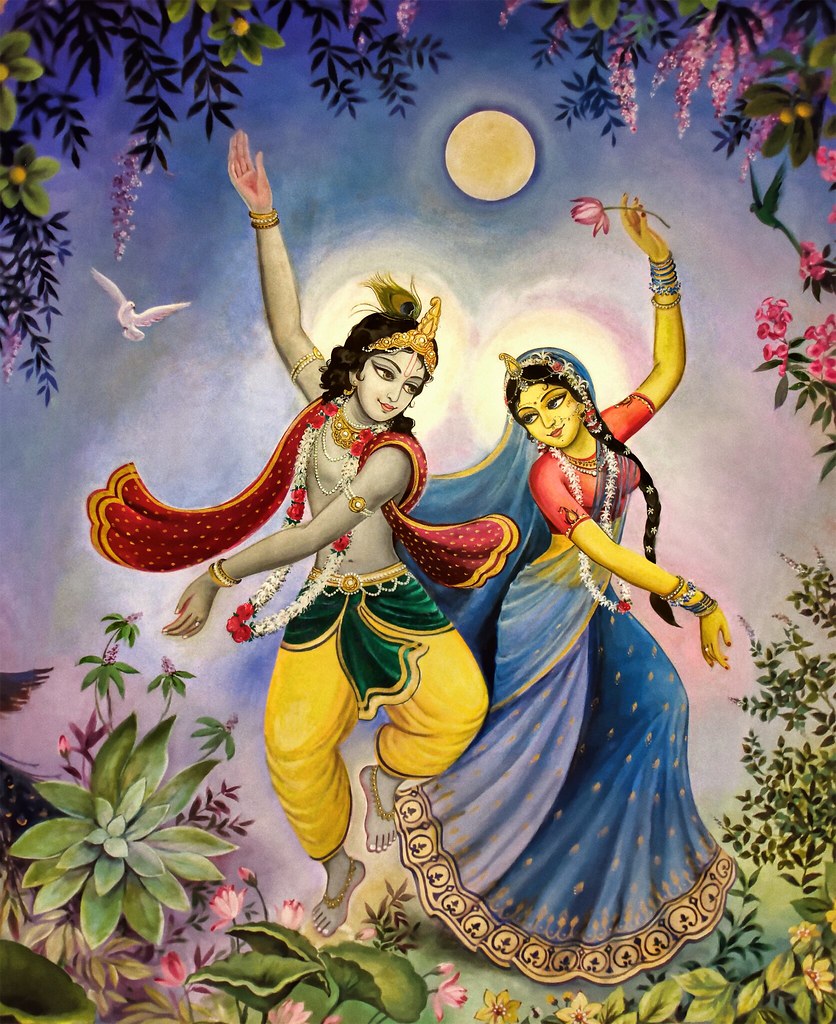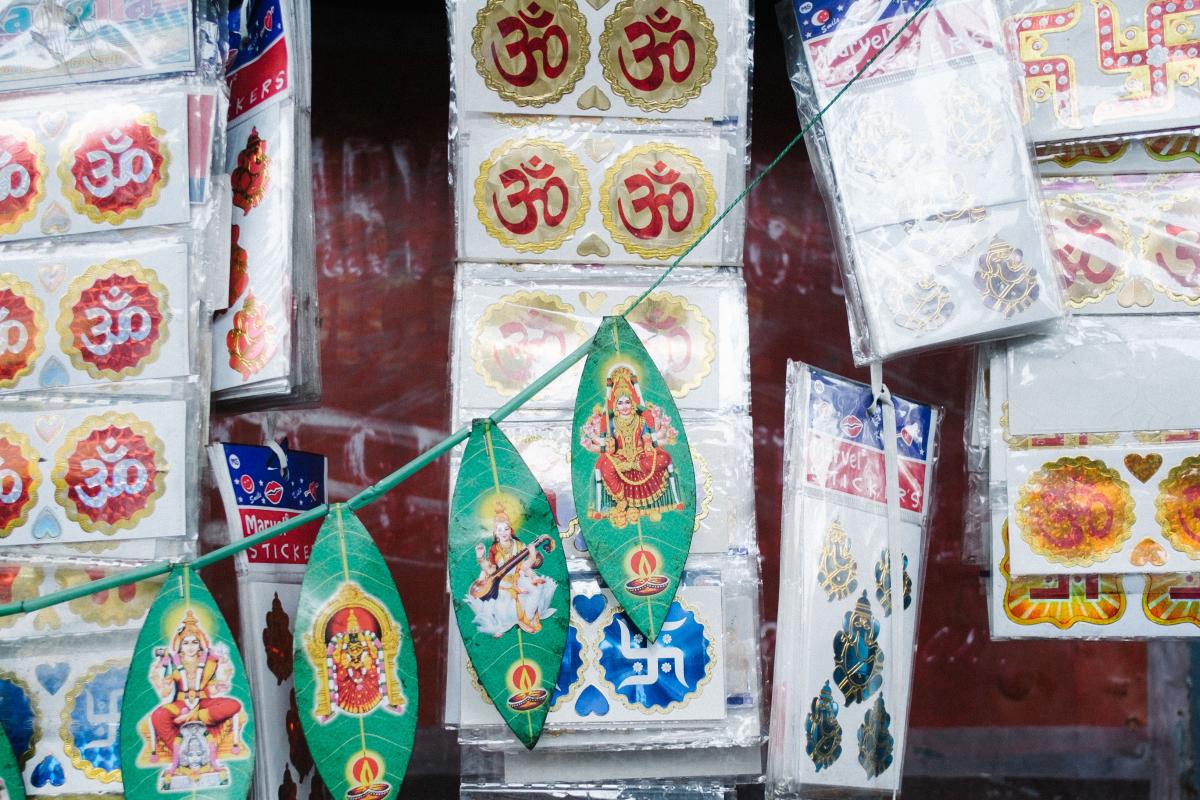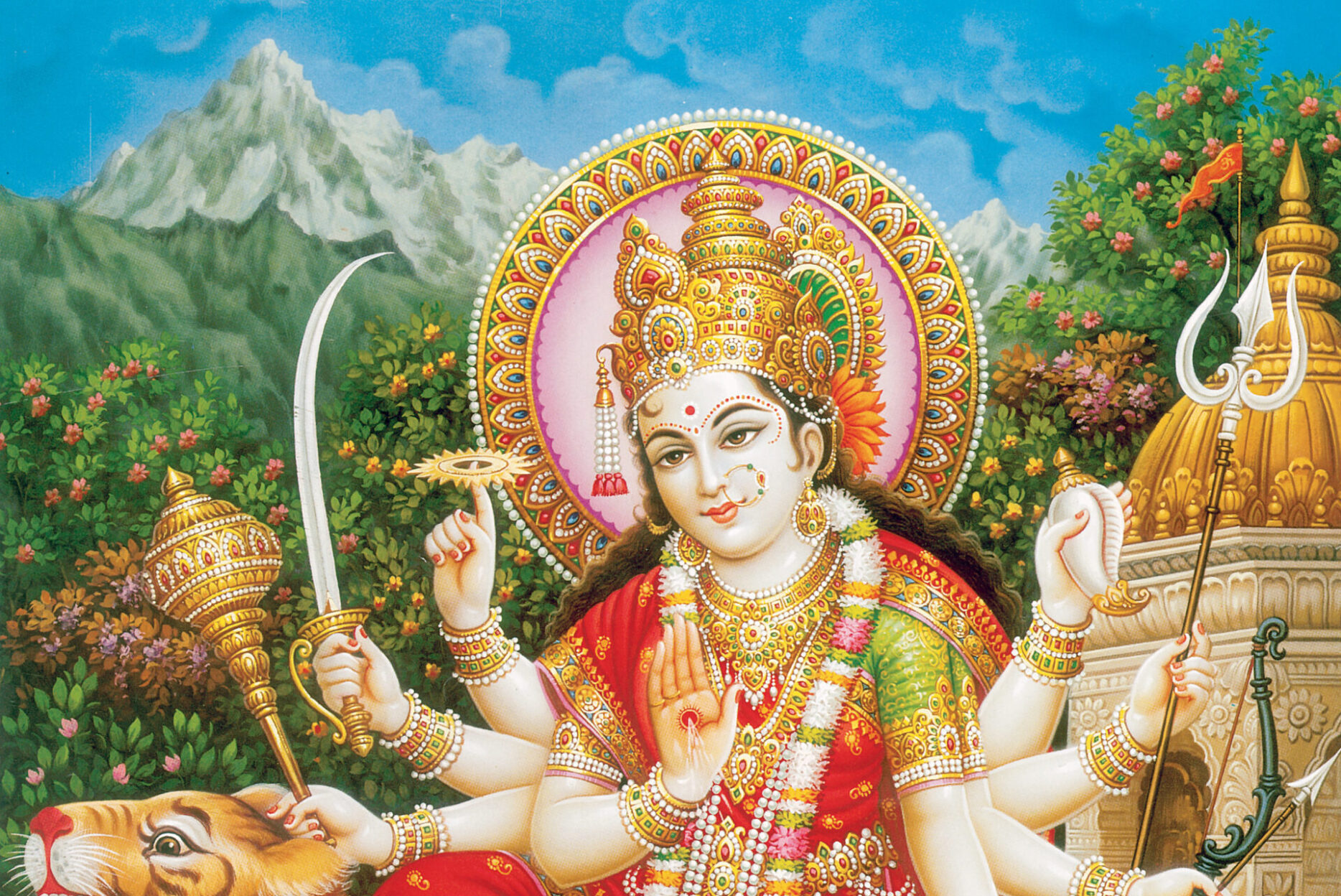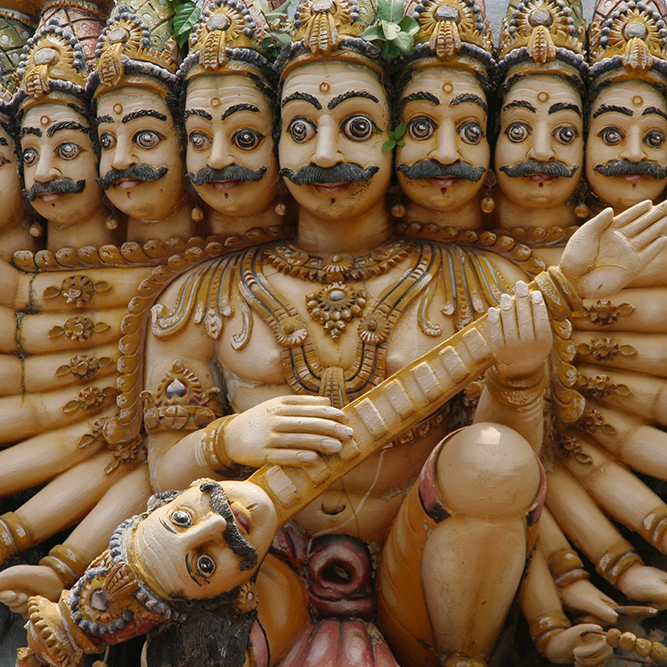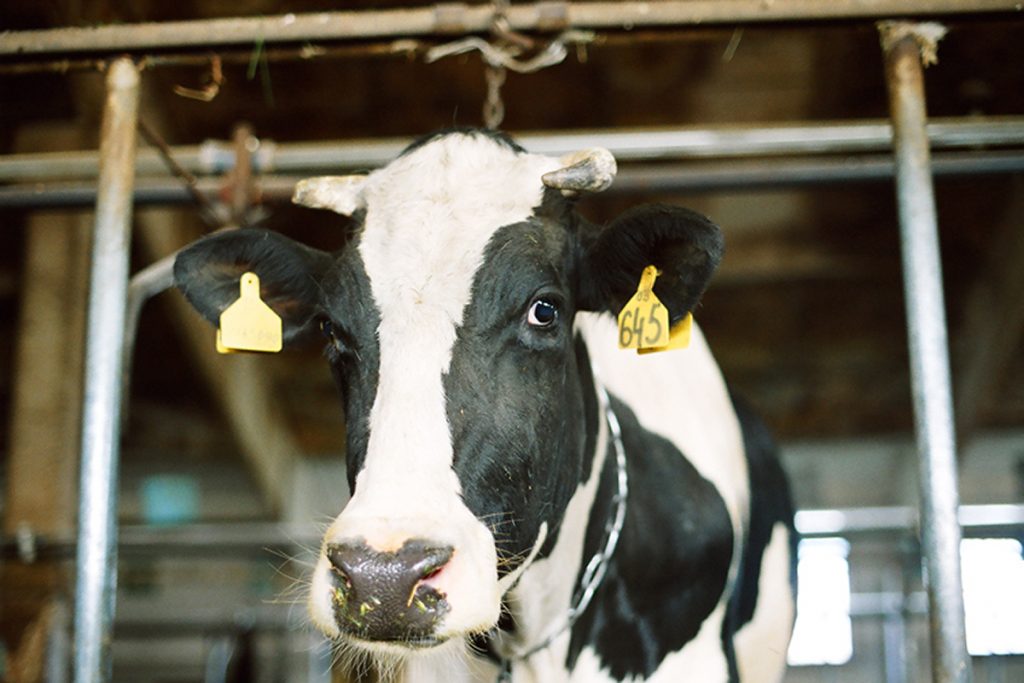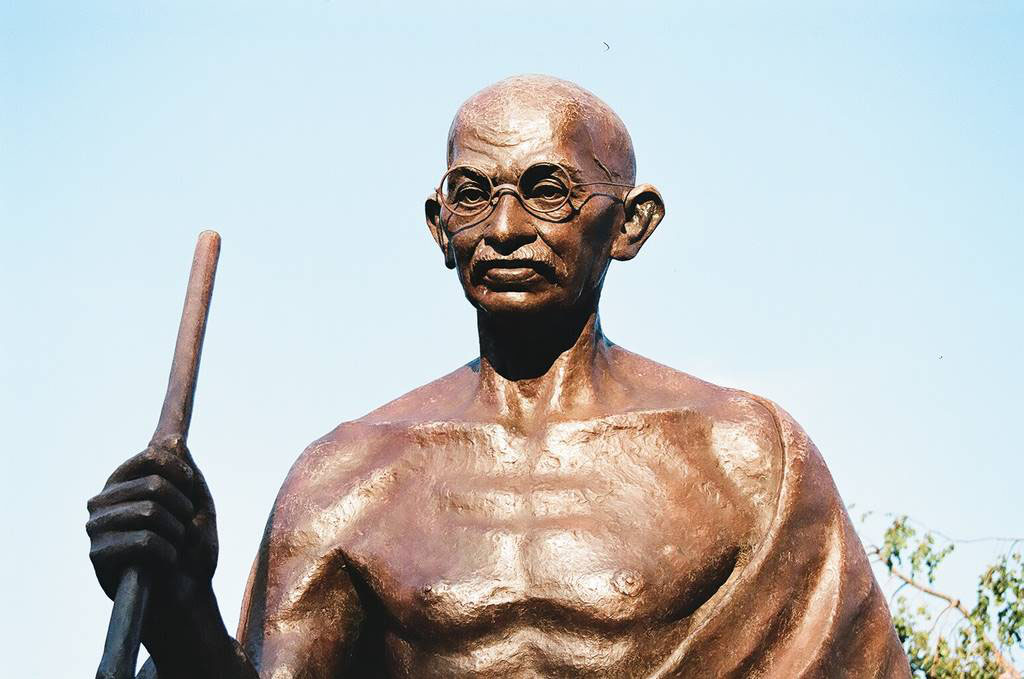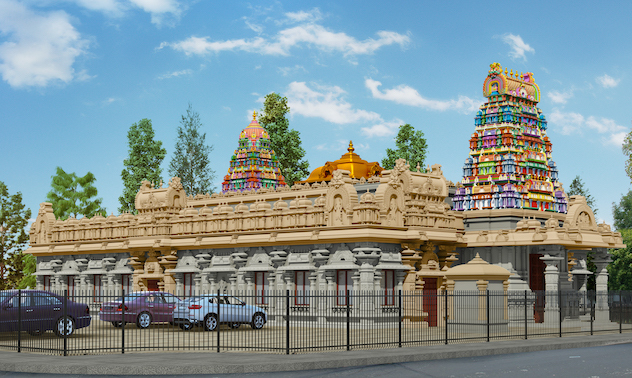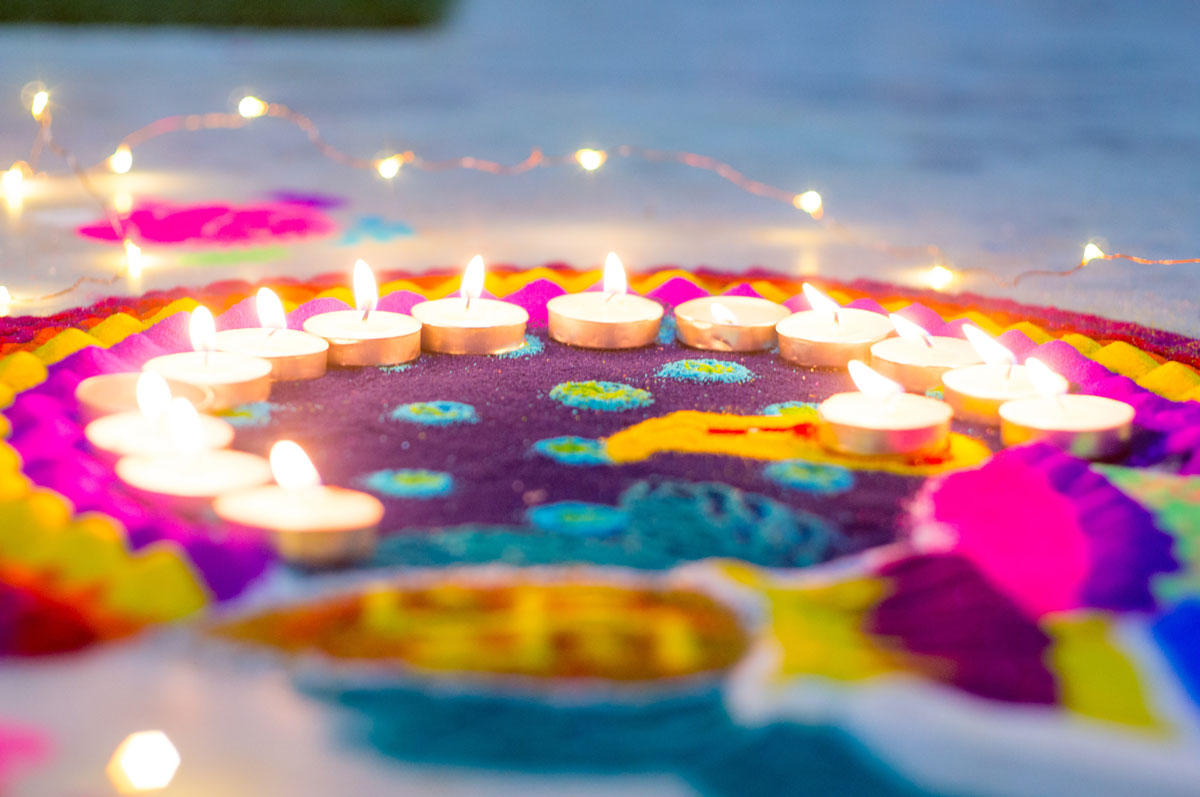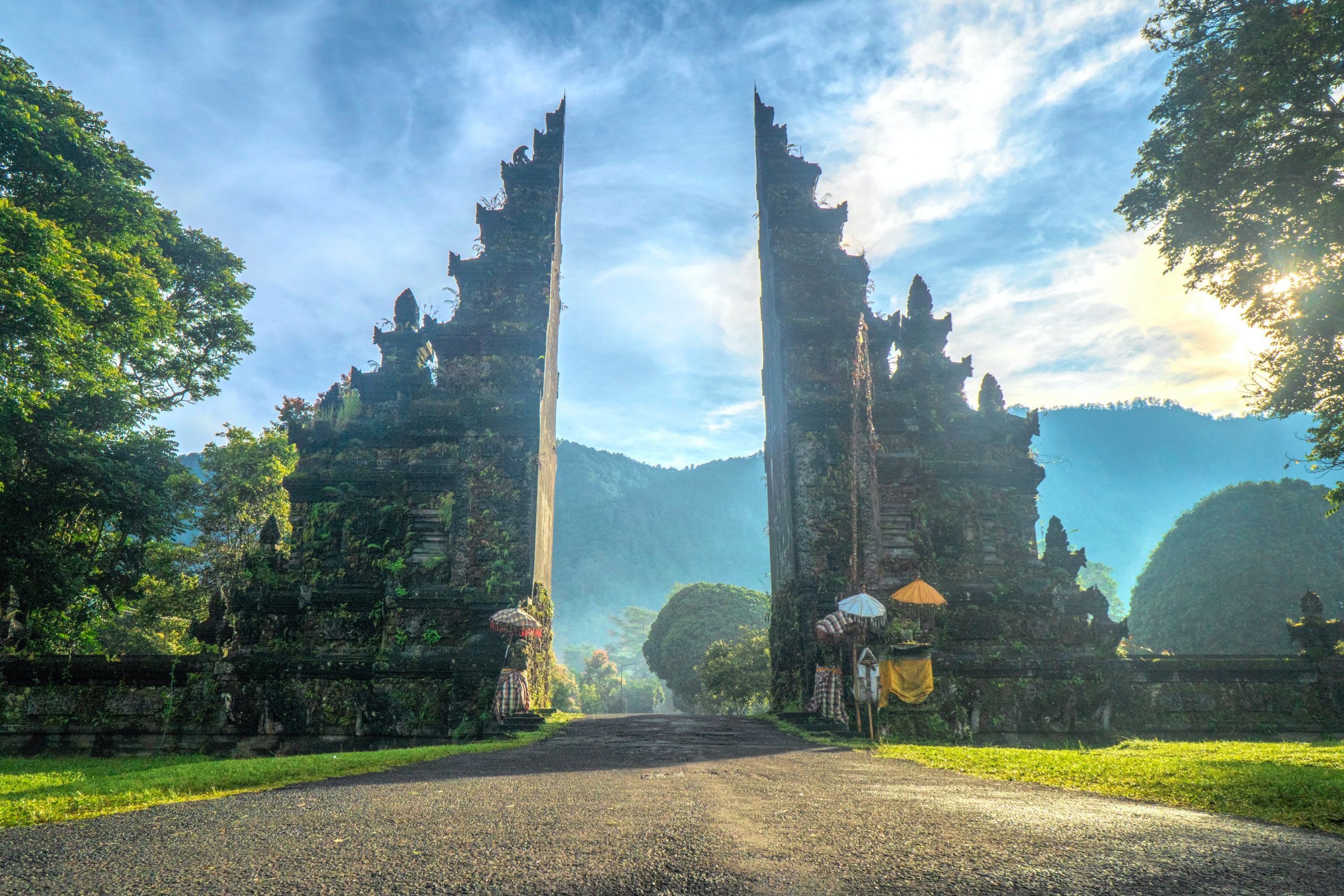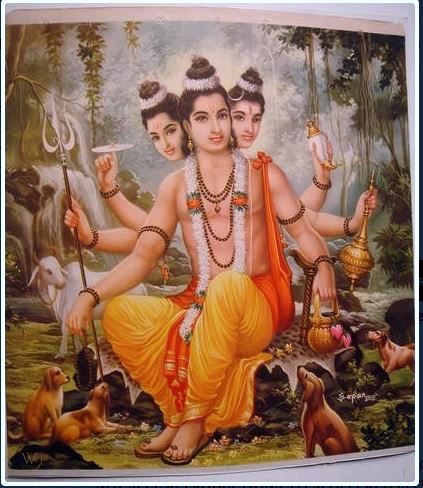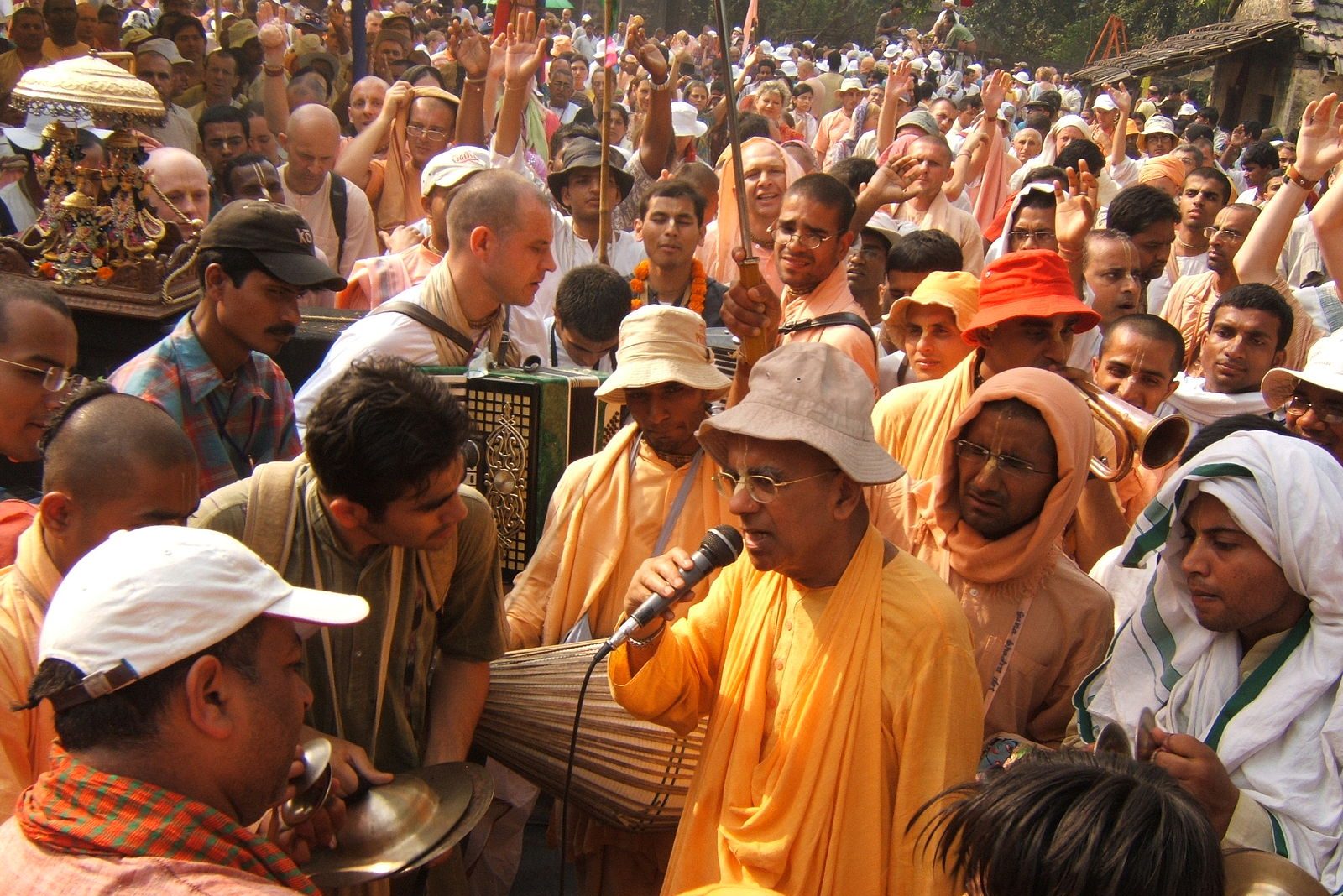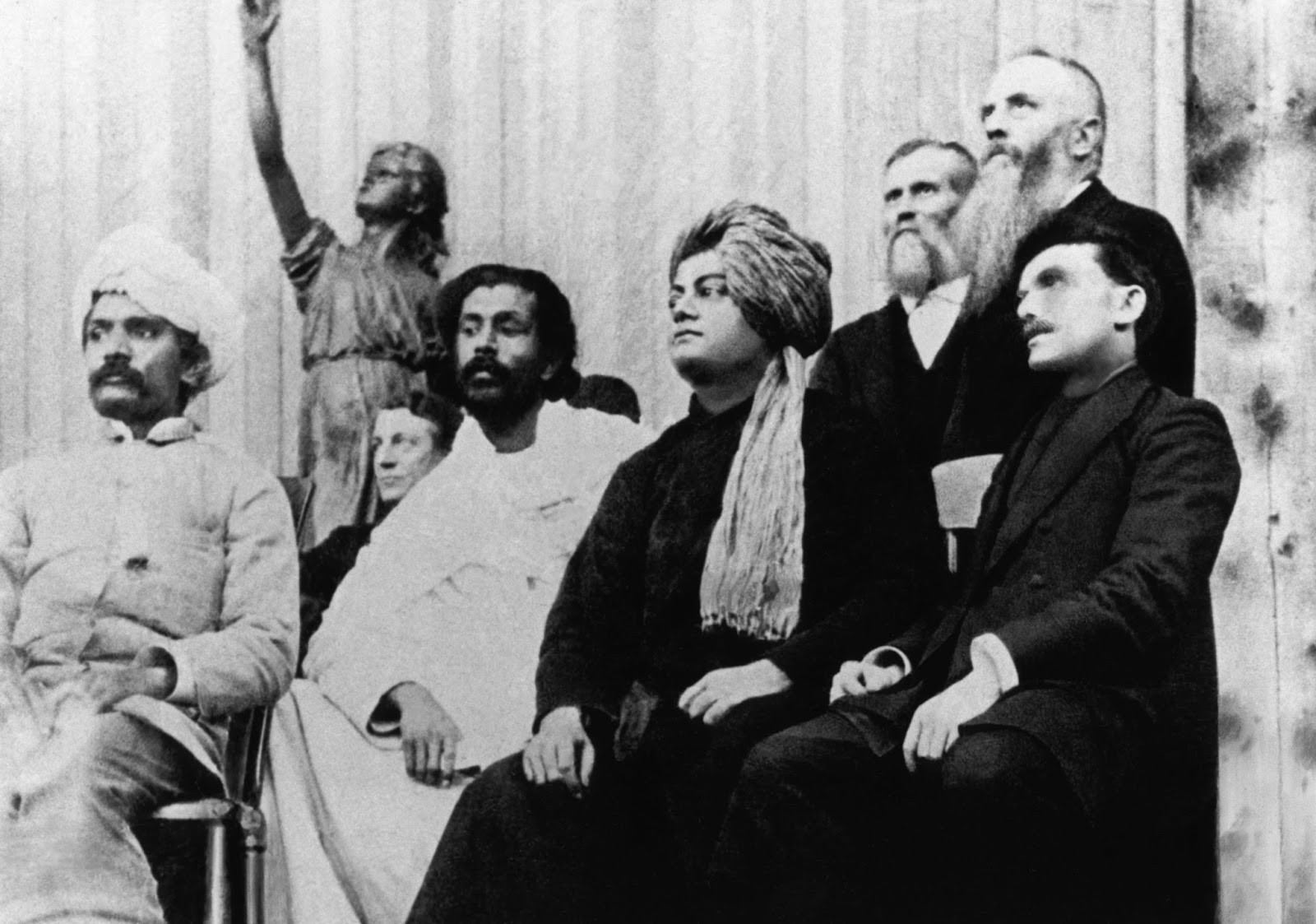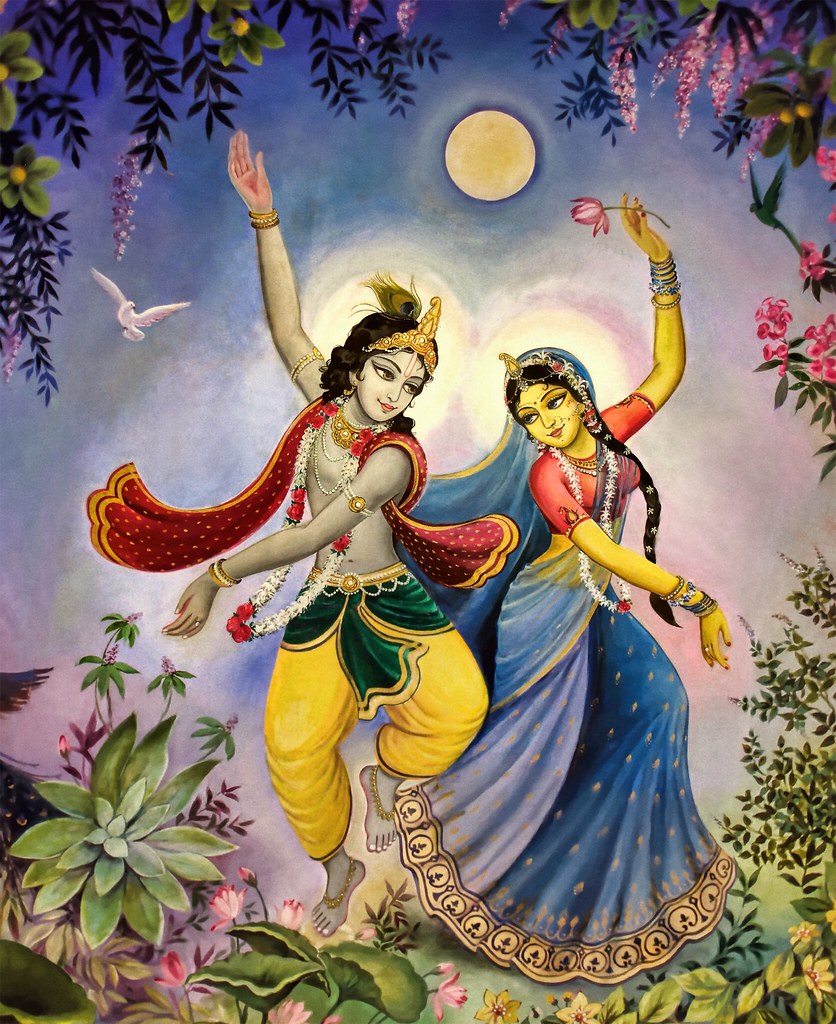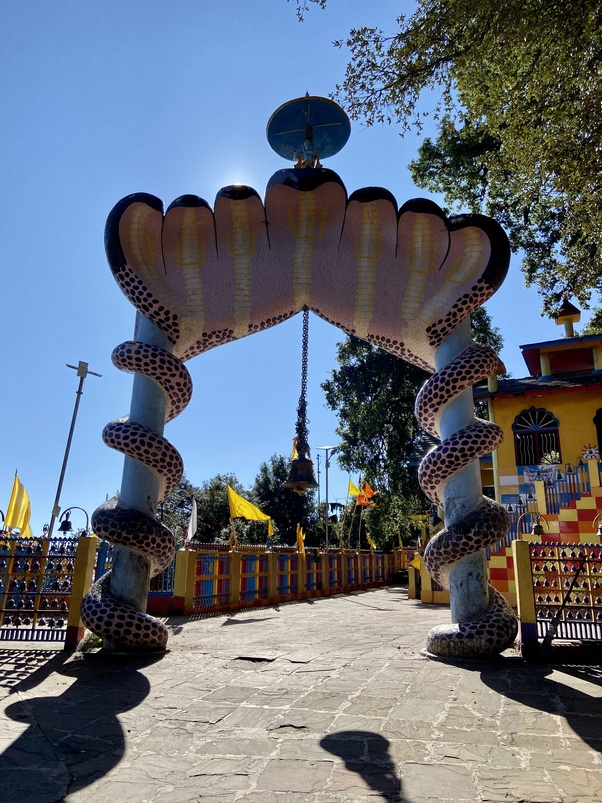
One of my friends was very interested in Nagas, and wanted to seek out sacred Naga sites in the Himalayas and venerate them. So, I reached out to some Naga experts who I know, and was advised that since the benevolence and moral virtue of Nagas ranges widely. And generally Nagas are not very friendly with outsider humans by default, so the safest way to please the Nagas was to first evoke Shiva as Nageshvara and seek His blessings.
To do that, in Haridwar, beside the Ganga, we found the nicest-feeling Shiva Linga in the area and did a special Rudra Abhishekam to Nageshvara.
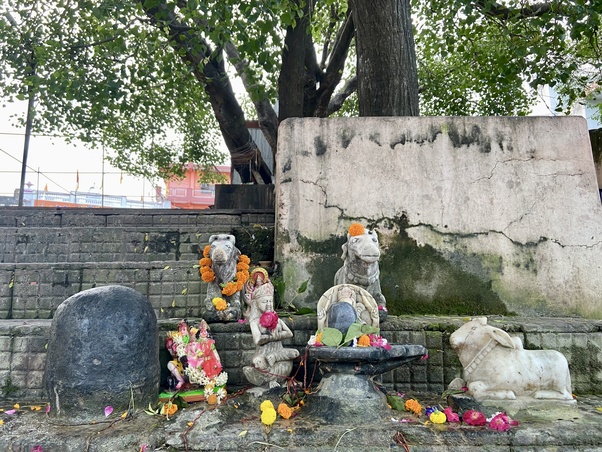
Then we went to the great Temple of the Naga Queen Manasa, high on a forest-covered Himalayan foothill overlooking the city from the west. Manasa is quite known for her temper, and being very demanding of veneration, unusually so for a Hindu deity. She is the Kuladevi of many of the Garhwali people, who are strong Naga worshippers, and she very much demands veneration before approaching other Nagas in her territory. She is said to be blind in one eye.
After going through the innermost main circuit of the temple in a crush of fervent devotees, we were able to find an empty corner, still within the main temple building, to sit down undisturbed for as long as we wanted and do our own puja. I performed a puja to Manasa, following the Manasa Dhyanam from Devi Bhagavata Purana, chanting the Manasa Siddha Mantra and offering flowers, scents, ornaments, food, etc. I recited the twelve names of Manasa: Jaratkaru, Jagadgauri, Manasa, Siddha Yogini, Vaishnavi, Naga Bhagii, Shaivi, Nageshvari, Jaratkarupriya, Astikamata, Vishahari, and Maha Gnyanayuta for protection from snakes, and read the Stotra of Manasa.
The proper blessing sought, on October 12 my friend and I set forth on a real adventure into the remote Himalayas, well off the beaten path, in search of this place called Sem Nagraj Temple (Temple of the Naga Ruler of Sem Valley), which we were told was about a five-hour drive into the mountains from Rishikesh, and held in high esteem by local Naga worshippers as a true place of Naga power.
The trouble was that none of us had actually heard of anyone ever going there, what’s exactly there in terms of amenities or accommodation, or if it was even safe to go.
Undaunted, we packed enough water and food for a couple days, not counting on finding any that was safe. In the morning, we walked to the Rishikesh taxi lot. The taxiwalas gathered around me. “Yes sir, where you want to go?”
From asking around, I had managed to find out from a swami in Parmarth Niketan Ashram that this Naga temple was in a village called Sem Mukhem.
“We want to go to Sem Mukhem village,” I told them.
They all shook their heads no. “Wrong name sir. Where you want to go?”
I repeated it several times, and in Hindi.
Then an old man got a thoughtful look and said to the other taxiwalas: “There is a village called Sem Mukhem.”
All the taxiwalas started muttering uncertainly about it.
Finally I pulled out a bunch of money and said, “Who wants to take us to Sem Mukhem?”
At last we got a taker. We haggled, settled on a price, and got in his car, a small yet tough jeep built for the mountain roads, bearing the proud slogan of जय नरसिंह देव! (Jay Narasimha Dev!), and we drove off into the mountains of Tehri Garhwal.
We left Dhanaulti and entered the Jakhnidar region. We passed a Bhairav Temple by a gorgeous mountain lake:
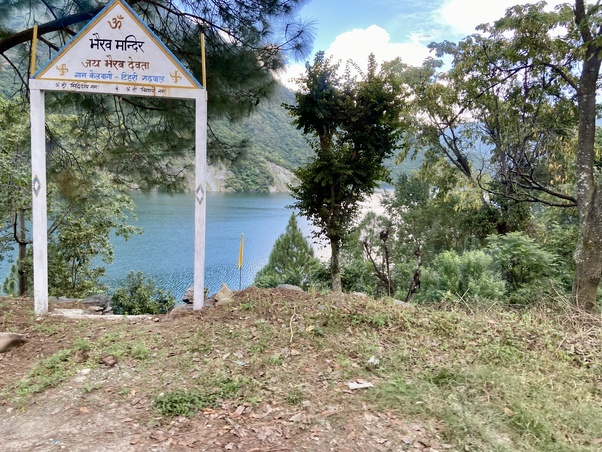
We crossed the Bhilangna River on a bridge covered with monkeys, and then headed higher up into the mountains, on increasingly tiny and poorly maintained roads.
By now the five-hour driving time estimate had elapsed, yet not only were we nowhere near Sem Mukhem, it became clear that our driver had never been to Sem Mukhem and didn’t know where it was.
Every time we reached an intersection, he pulled over and asked a local villager the way to Sem Mukhem. Most of them didn’t seem too sure either, but vaguely pointed more in one direction than the other. More than once we had to backtrack a bit.
At 5:40 pm we passed the last village, Pratapnagar.
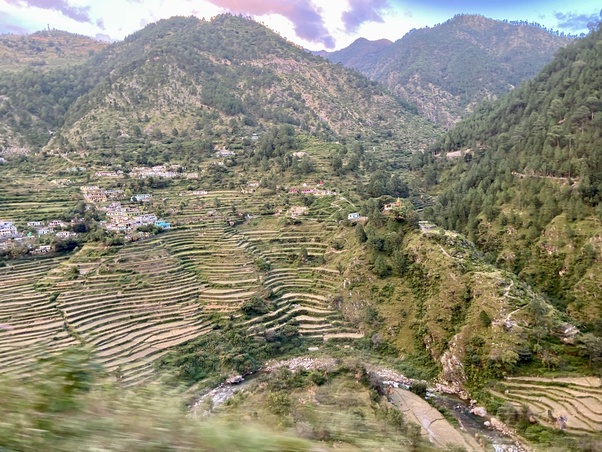
By then the sun was already sinking behind the western mountains. Past Pratapnagar the road turned to nothing but dirt and rocks, and clearly had not been maintained at all in some time. We crawled our way over no less than seven rockslides that lay spilled across the road.
Darkness falls fast in the mountains, and a couple hours later, full night caught us still bumping (smashing, really) our way along the most potholed road I’ve ever travelled. We passed not a single other vehicle since the last village.
Then one light appeared. Upon drawing near, we saw it was a lone roadside shack, outside which two men sat drinking. They stared at us as we pulled up alongside them and rolled down our windows.
“Sem Mukhem?” our driver shouted.
“Sem Mukhem yahaan!” (This is Sem Mukhem!) There was literally not a single other structure in sight.
“Sem Nagaraja kahaan hai?” I asked. (Where is the Naga King?)
“Nagraj uppar hai!” (The Naga King is up there!) they yelled enthusiastically, pointing into the night sky.
Following their pointing fingers, I made out a huge mountain silhouetted black against the stars and moon. They were pointing at its peak.
We drove up to the Naga mountain. The road ended at its foot. There, built right up against the base of the steep slope, was a single wooden farmhouse.
The driver stopped there and told us to get out. I offered to pay him to stay the night with us and drive us on the next day, but he refused; he said he was going back to the last village right now. So I paid him what we had agreed, we took our bags and got out of the car, and off he drove into the darkness back the way we came, leaving us standing there in the cold night on the lonely mountainside.
I walked up to the farmhouse. Light shone from an open door, within which I saw a family eating dinner — a man, wife, teen son, and younger daughter. They saw me, a random white guy walking out of the night, and stared at me like I was a ghost. The husband got up and came warily out to meet me. I saw he wore a knife. He didn’t speak a word of English — literally not even “yes” or “no” — but I spoke with him in Hindi, asked if we could please stay the night here, and offered him a 500 rupee note. He glanced us over, accepted immediately and offered dinner too. I got the impression 500 rupees was a lot of money to these people.
He showed us to our room. This house seemed to have no interior doors. It was just a series of a few rooms built up against the steep slope, each with its own exterior door. Our door was literally blocked by a most prodigious sleeping cow. And here I saw an opportunity.
I wanted to know whether to trust these people, or to expect them to try to rob us in the night. And animals will tell you what humans are like. I walked straight up to the cow, who stirred blearily and half-opened her eyes, and I reached my hand out for her face. Will you flinch? I wanted to know. How do humans treat you?
And this cow, upon waking up and seeing a totally unfamiliar human walking right up and sticking his hand in her face, instantly pressed her cheek into my palm with enthusiastic affection, and immediately I felt at ease. These are good people. This cow not only loved humans, but she was well-fed, fat, and her coat was smooth and not even dusty; she had been hand-brushed that very day. These people treated that cow with such love. We met a great dog too.
Stepping literally over the cow with apologies, we entered our tiny room, cold but equipped with a stack of very plush, comfortable quilts, and decorated only with marigold-garlanded photos of deceased loved ones. The house had no running water nor bathrooms. The toilet was a somewhat long walk outside into the bushes behind the house. We were warned to beware of snakes and leopards in the moonlight. The night was very quiet. The only sounds the tinking of a bell outside in the cold mountain wind, and occasional cow-sounds from right outside our door (which did not latch, much less lock).
We woke early in the morning to the predawn birdsong, and soon began our hike up the mountain. Cows were grazing freely in the overgrown brush at the mountain’s foot.
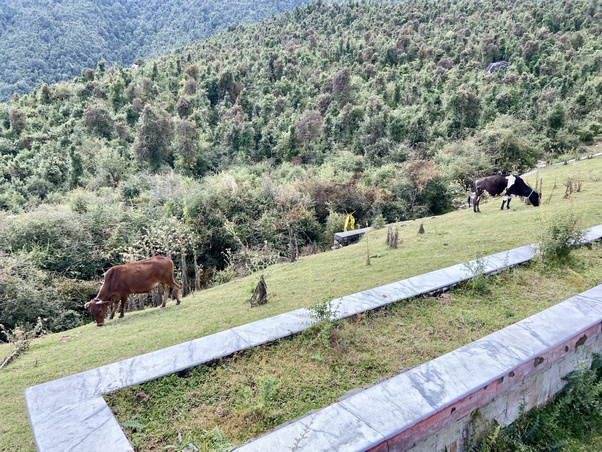
Beside the farmhouse was a decorated gate indicating a footpath up the mountain to the Naga temple. The mountain was completely covered in thick forest, buzzing with wild honeybees. The path ran by a sacred tree shrine.

The steep hike up to the Naga temple took a little over an hour and a half. The weather was gorgeous. As we got up higher, snow-clad Himalayan peaks came into view in the few spots where the trees opened up enough. Until finally we reached the spectacular gate of the Naga temple:

As we arrived, the head priest was in the midst of morning ceremonies. When he reached a pausing point, he came and greeted us warmly. It was only him and two assistants up there on the mountain. None of the three of them spoke even a word of English, but they were very friendly and welcoming. They made us chai and we sat in the temple and talked for a while in Hindi. No other visitors came up that whole morning while we were there. They were astonished to see us, and said, “Foreigners have never come here before. How did you even learn of this place?”
In answer to my questions, the head priest told me all about the history of the temple and the Naga veneration in this area. Now as I said, he spoke not a word of English. My Hindi is far from fluent and also he did not speak standard Hindi, but the Tehriyali Garhwali dialect. On several other similar occasions when talking with such people I had a fluent speaker with me to translate, but not this time. So I didn’t understand everything he told me, but here is what I did understand:
Many centuries ago — he gave an exact date but I missed it; he used a local calendar rather than Gregorian years — a great Naga appeared in this valley, descending from this very mountain. The Naga was short-tempered and quick to anger, and somehow the local humans who lived in the valley angered the Naga. He said specifically how this happened, but I wasn’t able to follow the complicated-sounding story. The Naga attacked the humans and devastated them with his powerful magic. The local human raja came to defend his people and his soldiers fought the Naga, who always came from up on this mountain. The Naga was very much getting the better of these encounters, devastating and scattering the human soldiers, and the humans were fighting a losing war.
Then a mysterious guru arrived, a black-skinned man somehow connected with Krishna. I didn’t catch if he was supposedly a local avatar or just a great bhakta. The people told the guru their woes with the Naga. The guru told the human raja to leave his soldiers and weapons behind and accompany him, unarmed, up the mountain from which the Naga came. So they climbed together up the mountain, to the very spot where this temple now stands. At the time it was only rocks and forest. The guru pointed to a rock jutting from the mountainside, apparently unremarkable and just like many other rocks, and said, “The Naga will come from there.” The guru took his seat nearby, watching that rock, and the human raja waited anxiously with him.
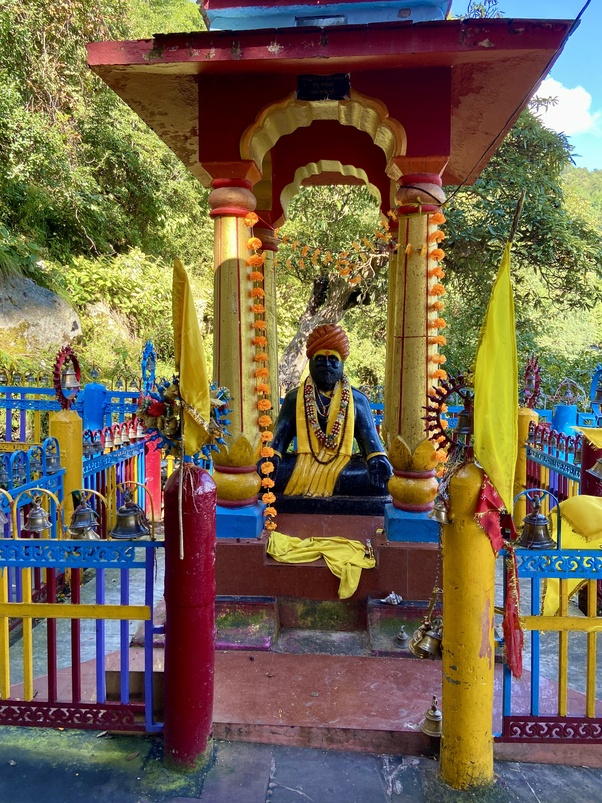
After some time, that rock did indeed open up, and from a dark passage into the earth, the great Naga emerged. The guru greeted the Naga and they had a long conversation. Politely greeted, the Naga introduced himself as Kaliya Nagaraja, having returned millennia after being banished by Shri Krishna, through a hidden portal in the rock down to Mahatala Loka in the Underworld.
The guru brokered a peace between the Nagas and the human raja, diplomatically resolving their conflict. A new arrangement was made, in which the humans of the valley would venerate Kaliya Nagaraja here, making certain offerings and performing certain sacred ceremonies, and in return Kaliya Nagaraja would bless the valley with healthy animals and crops, and lush, thriving plantlife and natural fertility.
Kaliya became the main Nagaraja for the whole Kedarkhand area — most of the Himalaya mountains of Garhwal. The raja built the original temple here, and appointed a special lineage priesthood here to dedicate their lives to performing the ceremonies that maintain good relations with the Nagaraja.
The priest I was talking to was the current such priest. He had a son, who did live nearby, but his son was not dedicating his life to his father’s priestly ways, so instead he had two other apprentices, who were indeed there with him at the temple.
He also told me that anyone with the planetary Kal Sarpa Yoga — all planets in their astrological chart hemmed in between Rahu and Ketu — can have the adverse effects of this Yoga neutralized at this temple.
I had brought a bottle of water from the sacred spring of Neelkanth Mahadev and I gave this to the priest, who poured some of the water on the sacred Naga stone, keeping the rest for later rites. The priests showed us some of the sacred ceremonies to appease Kaliya Nagaraja, offered to the sacred stone, still attached to the mountainside, which the temple is built around.
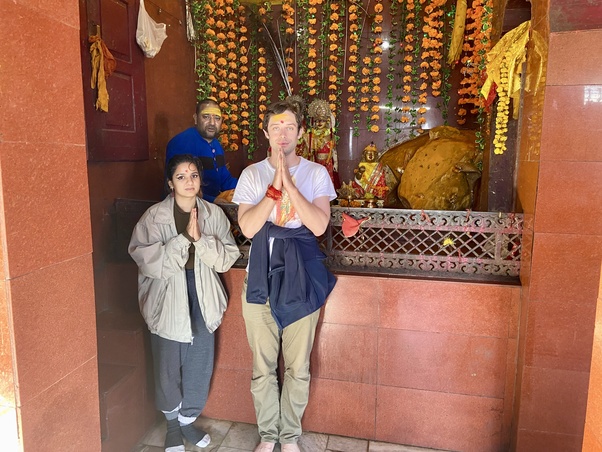
This temple was truly a place of beauty and mystery, authentic and powerful. I could feel the extraordinary Naga presence very strongly, and in a good way; it felt positive and friendly. It was wonderful to see this place and feel the atmosphere around the temple. The place was well kept-up too, clean and with good paint jobs, etc.; the local villagers clearly valued this temple and cared for it. They are enlivening something ignored even by most pilgrims to the Himalayas these days.
A note: Though I undertook this trip in the autumn of 2022, information on the temples and places visited presented at the links in this article are current as of mid-2025. Logistical details of getting between places can change quickly, however, and individuals should verify the latest information from other sources.
All photos in this article © Devala Rees.


